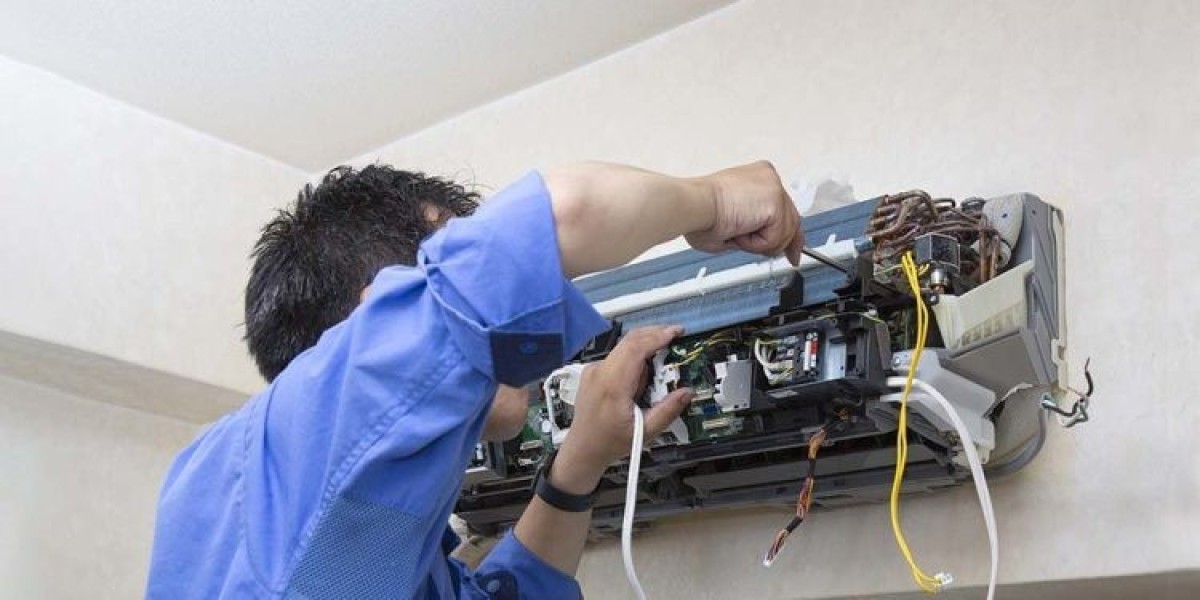Introduction
Oil seed-crushing plants play a pivotal role in the oil production industry. They transform seeds into oil, which is an essential ingredient in many industries. In this blog, we'll delve into the importance of efficiency in the manufacturing process of these plants.
Understanding Oil Seed Crushing Plants
Oil seed crushing plants are specialized facilities where oil seeds are processed to extract valuable oil. This oil is a crucial ingredient in a wide range of products, from food to cosmetics to biofuels. The efficient extraction of oil from seeds is vital for both profitability and meeting the high demand in various industries.
Definition and Purpose of Oil Seed Crushing Plants
An oil seed crushing plant is a facility designed to crush oil seeds and extract oil from them. The extracted oil is then refined and used for various purposes. These plants play a critical role in the oil production industry, as they are the first step in the process of turning raw seeds into usable oil.
Types of Oil Seeds Commonly Processed
There are several types of oil seeds that are commonly processed in oil seed-crushing plants. These include:
Soybeans: One of the most widely processed oil seeds, soybeans are crushed to extract soybean oil, which is used in cooking, as an ingredient in processed foods, and as a base for biodiesel.
Sunflowers: Sunflower seeds are crushed to produce sunflower oil, a popular cooking oil known for its light taste and health benefits.
Canola: Canola seeds are crushed to extract canola oil, a versatile oil used in cooking, baking, and as an industrial lubricant.
Cottonseeds: Cottonseeds are crushed to produce cottonseed oil, which is used in food products, cosmetics, and as a feedstock for biodiesel.
Palm Kernels: Palm kernels are crushed to extract palm kernel oil, which is used in food products, personal care items, and as an industrial lubricant.
Importance of Oil Extraction from Seeds
Oil extraction from seeds is essential for several reasons:
Food Production: Many of the oils extracted from seeds are used in cooking and as ingredients in processed foods. They are a vital source of fats and nutrients in our diet.
Industrial Uses: Some oils, like canola and cottonseed oil, are used as industrial lubricants and as feedstocks for biodiesel production.
Cosmetics and Personal Care: Oils like palm kernel oil are used in cosmetics and personal care products, providing moisturizing and other beneficial properties.
Economic Value: The oil production industry is a significant contributor to the global economy, providing jobs, supporting agriculture, and generating revenue.
Preparing for Manufacturing
Before embarking on the manufacturing of an oil seed crushing plant, it's essential to lay a solid foundation. Proper preparation ensures that the plant will operate efficiently, comply with regulations, and be economically viable.
Conducting Thorough Research and Feasibility Analysis
Begin by conducting comprehensive research on the oil seed crushing industry. Understand the market demand for the types of oil you plan to produce, the competition, and the potential for profit. A feasibility analysis will help you assess whether your proposed plant is viable. This analysis should consider factors such as the availability of raw materials, the cost of equipment, and the expected return on investment.
Selecting the Appropriate Location for the Plant
The location of your plant is crucial. Choose a site that is close to the source of your raw materials to reduce transportation costs. The location should also have good access to transportation networks for shipping your products. Consider the availability of skilled labor in the area, as well as utilities like water and electricity. Ensure that the site is large enough to accommodate your plant and any future expansion.
Obtaining Necessary Permits and Complying with Regulations
Before starting construction, ensure that you have all the necessary permits. This may include building permits, environmental permits, and permits to operate machinery. Familiarize yourself with local, state, and national regulations that apply to oil seed-crushing plants. This may include regulations related to air and water pollution, waste disposal, and worker safety. Ensure that your plant design and operations plan comply with these regulations.
Developing a Business Plan
Develop a detailed business plan for your oil seed-crushing plant. This should include your business goals, target market, marketing strategy, and financial projections. A well-thought-out business plan will serve as a roadmap for your business and help you secure financing if needed.
Designing an Efficient Oil Seed Crushing Plant
An efficient plant starts with the right design. Key components include seed cleaners, crushers, and oil presses. Select equipment that optimizes the crushing process for maximum oil extraction. Design the plant layout for optimal workflow and safety.
Building the Plant
Constructing an oil seed-crushing plant is a significant undertaking that requires careful planning and execution. By hiring skilled labor, managing the workforce effectively, and ensuring quality control, you can build a plant that meets industry standards and operates efficiently.
Hiring Skilled Labor
The construction of an oil seed crushing plant requires a team of skilled laborers, including carpenters, electricians, plumbers, and welders. When hiring, look for workers with experience in industrial construction and a track record of producing high-quality work. Ensure that your team has the necessary certifications and training to work safely and effectively.
Managing the Workforce Effectively
Effective workforce management is crucial for keeping the construction project on schedule and within budget. Develop a detailed construction timeline and assign tasks to your team based on their skills and experience. Hold regular progress meetings to monitor the project's status and address any issues that arise. Encourage open communication and teamwork among your workers.
Ensuring Quality Control
Quality control is essential during construction to ensure that the plant meets industry standards and operates efficiently. Implement a quality control plan that includes regular inspections of the work, testing of materials and equipment, and documentation of the construction process. Address any issues or deviations from the plan promptly to prevent costly rework or delays.
Sourcing Quality Materials
The quality of the materials used in construction directly affects the plant's durability and performance. Source high-quality materials from reputable suppliers and ensure that they meet the specifications outlined in your construction plan. Verify the quality of the materials through testing and documentation.
Adhering to Safety Standards
Safety is a top priority during construction. Ensure that your workers follow safety protocols and wear the appropriate personal protective equipment. Provide training on safe work practices and conduct regular safety audits to identify and address potential hazards. By prioritizing safety, you can prevent accidents and create a positive work environment.
Monitoring Budget and Timeline
Keep a close eye on the project's budget and timeline. Monitor expenses and compare them to your budget projections. If costs are exceeding your budget, identify the cause and take corrective action. Ensure that the project is progressing according to the timeline and address any delays promptly.
Equipment Installation and Setup
Setting up an oil seed-crushing plant involves more than just constructing the facility. Proper installation and calibration of the machinery are crucial for optimal performance. Integrating automation and control systems can streamline operations, and thorough testing ensures everything works as intended before production begins.
Installing the machinery
Proper Placement: Ensure each piece of equipment is placed according to the plant's layout plan, allowing for efficient workflow and easy maintenance access.
Secure Installation: Anchor the machinery securely to prevent movement during operation, ensuring safety and consistent performance.
Connection Verification: Check all electrical and mechanical connections, ensuring they are tight and correctly aligned, to prevent malfunctions or safety hazards.
Calibrating the Equipment
Follow Manufacturer Guidelines: Adhere to the manufacturer's instructions for calibrating each machine, ensuring accurate and efficient operation.
Test Runs: Conduct test runs with small batches of seeds to verify the equipment's performance and make necessary adjustments.
Document Calibration: Keep records of calibration settings and results for future reference and to establish a baseline for maintenance.
Integrating Automation and Control Systems
Automate Processes: Implement automation systems to control processes like seed cleaning, crushing, and oil extraction, reducing manual labor and increasing efficiency.
Monitor Key Variables: Use control systems to continuously monitor variables such as temperature, pressure, and flow rates, ensuring consistent product quality and preventing equipment damage.
Operator Training: Train operators to use automation and control systems effectively, enabling them to quickly respond to any issues and optimize production.
Performing Thorough Testing
System Testing: Run the entire plant under realistic conditions to test the integrated systems, ensuring smooth operations and identifying potential bottlenecks or issues.
Quality Verification: Analyze the oil produced during testing to verify it meets quality standards, adjusting equipment settings if necessary.
Safety Checks: Conduct safety checks to ensure all safety features, such as emergency stops and safety guards, function correctly.
Preparing for Production
Final Adjustments: Based on testing results, make any final adjustments to equipment settings or plant layout to optimize production.
Operator Readiness: Ensure operators are fully trained and comfortable with all equipment and systems, ready to handle real-time production scenarios.
Documentation: Keep detailed records of installation, calibration, testing, and operator training for future reference and compliance with industry regulations.
In conclusion, the installation and setup phase is critical for the success of an oil seed crushing plant. Properly installed and calibrated machinery, integrated automation and control systems, and thorough testing lay the foundation for efficient and high-quality production. By following these steps, you can ensure your plant is ready to meet the demands of oil production.
Maximizing Efficiency in Operations
Efficiency is key to the success of an oil seed-crushing plant. By implementing best practices, optimizing the crushing process, and minimizing waste and environmental impact, you can maximize efficiency and profitability.
Seed Handling and Preparation
Proper Storage: Store seeds in a cool, dry place to prevent spoilage and maintain quality. Use silos or bins that protect the seeds from pests and contaminants.
Pre-cleaning: Remove impurities like dirt, stones, and plant debris from the seeds before processing. Use equipment like sieves, air classifiers, or magnetic separators.
Seed Conditioning: Adjust the moisture content of the seeds to the optimal level for crushing. This can be done through drying or adding water, depending on the seed type.
Pre-crushing: For larger seeds, use pre-crushing equipment to reduce the seed size, making it easier for the oil to be extracted in the main crushing process.
Optimizing the Crushing Process
Equipment Calibration: Regularly calibrate the crushing equipment to ensure it operates at peak efficiency. Adjust settings like pressure, temperature, and speed to optimize oil extraction.
Continuous Monitoring: Use sensors and control systems to monitor the crushing process in real-time. Make adjustments as needed to maintain optimal conditions.
Quality Control: Regularly test the oil produced to ensure it meets quality standards. Adjust the crushing process if the oil quality deviates from the desired specifications.
Minimizing Waste and Environmental Impact
Recycling By-products: The by-products of oil seed crushing, such as meal and hulls, can be recycled into animal feed, fertilizers, or biofuels. This reduces waste and adds value to the operation.
Energy Efficiency: Use energy-efficient equipment and practices to reduce energy consumption. Implement energy-saving technologies like variable frequency drives or heat recovery systems.
Water Conservation: If water is used in the process, implement water-saving practices like recycling or using closed-loop systems. Treat wastewater before discharge to comply with environmental regulations.
Emission Reduction: Implement air pollution control measures to reduce emissions from the plant. Use equipment like scrubbers or cyclones to capture particulate matter and other pollutants.
Ensuring Quality and Safety
Ensuring quality and safety is paramount in an oil seed-crushing plant. By implementing quality control measures, and safety protocols, and complying with industry standards, you can produce high-quality oil and protect your workforce.
Quality Control Measures
Regular Testing: Regularly test the oil produced for quality parameters like acidity, color, and purity. Use laboratory equipment like spectrometers and titrators to conduct these tests.
Process Control: Monitor the crushing process continuously and adjust parameters like temperature and pressure to maintain consistent oil quality.
Raw Material Inspection: Inspect the incoming seeds for quality and reject any batches that do not meet the standards.
Documentation: Maintain detailed records of quality control tests, process parameters, and raw material inspections for traceability and compliance.
Safety Protocols
Training: Train your staff on safety protocols, including the proper use of equipment, handling of chemicals, and emergency procedures.
Personal Protective Equipment (PPE): Provide PPE like gloves, goggles, and masks to protect workers from hazards like dust, chemicals, and hot surfaces.
Machine Safety: Equip machines with safety features like emergency stops, guards, and interlocks to prevent accidents.
Fire Safety: Install fire suppression systems and provide fire extinguishers throughout the plant. Train staff on fire safety procedures.
Compliance with Industry Standards
Regulatory Compliance: Ensure compliance with local, national, and international regulations related to food safety, environmental protection, and worker safety.
Certifications: Obtain certifications like ISO 9001 for quality management and ISO 22000 for food safety management to demonstrate your commitment to quality and safety.
Maintenance and Continuous Improvement
Regular maintenance and continuous improvement are essential for the long-term success of an oil seed-crushing plant.
Maintenance Schedule
Preventive Maintenance: Develop a preventive maintenance schedule based on the manufacturer's recommendations and your plant's operating conditions. Regularly inspect, clean, and lubricate the equipment to prevent breakdowns.
Corrective Maintenance: Address any issues or malfunctions promptly to minimize downtime. Keep spare parts on hand for quick repairs.
Training and Troubleshooting
Staff Training: Train your staff in equipment upkeep and troubleshooting. Provide refresher training and updates on new technologies and best practices.
Troubleshooting Guides: Develop troubleshooting guides to help staff quickly diagnose and resolve common issues.
Continuous Improvement
Feedback: Encourage feedback from staff, customers, and stakeholders to identify areas for improvement.
Technology Upgrades: Incorporate new technologies and equipment upgrades to improve efficiency, quality, and safety.
Process Optimization: Continuously analyze and optimize your processes to reduce costs, increase productivity, and improve product quality.
Economic Viability and Return on Investment
Ensuring the economic viability of your oil seed-crushing plant is crucial for long-term success.
Initial Investment and Operational Costs
Capital Expenditure: Calculate the initial investment required for land, construction, equipment, and startup costs.
Operational Expenditure: Estimate the ongoing operational costs, including raw materials, labor, utilities, maintenance, and overhead.
Potential Returns and Profit Margins
Revenue Projections: Estimate the potential revenue based on market demand, production capacity, and selling prices.
Profit Margins: Analyze the profit margins by subtracting the operational costs from the projected revenue.
Strategies for Long-Term Viability
Optimizing Operations: Continuously optimize your operations to reduce costs, increase efficiency, and improve product quality.
Exploring New Markets: Expand into new markets or diversify your product offerings to increase revenue and reduce reliance on a single market.
Sustainability: Implement sustainable practices to reduce environmental impact, improve community relations, and ensure long-term viability.
Conclusion
Efficient oil seed-crushing plants are vital for the oil industry. By understanding the manufacturing process, optimizing operations, and ensuring quality and safety, oil seed-crushing plant manufacturers can contribute to a more sustainable and profitable oil production industry. We encourage readers to explore further and implement the knowledge gained to achieve success in this field.
 " class="wow_main_float_head_img">
" class="wow_main_float_head_img">







